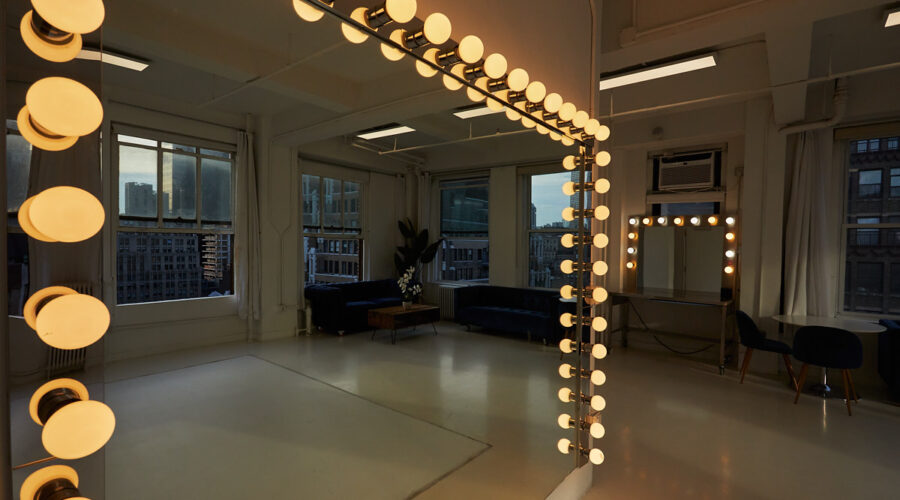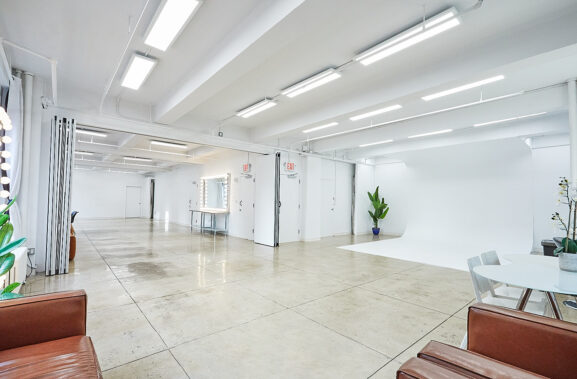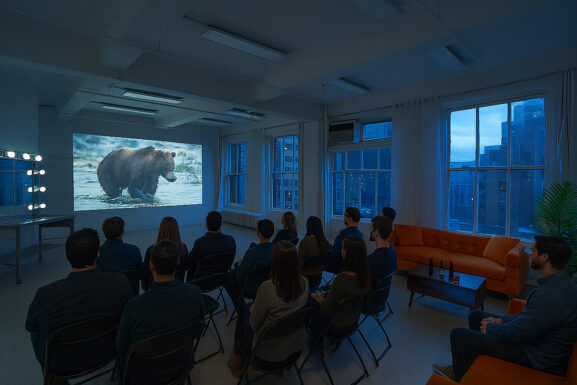Continuous Lighting vs Strobe: Guide to Choosing the Right Photography Lighting
Choosing between continuous lighting and strobe lighting can feel like one of the most important decisions a photographer makes when shaping the look and feel of their work. Light is the foundation of every image, it determines clarity, mood, and the overall impact on the viewer. Continuous lighting offers the benefit of constant illumination, letting you see exactly how shadows and highlights interact before you take the shot. Strobe lighting, on the other hand, delivers short bursts of intense light, perfect for freezing motion and producing crisp, high-quality images even in challenging conditions. For photographers shooting portraits, products, events, or high-speed action, knowing when and why to use each lighting type can save time, improve results, and reduce post-processing work. Guide by Love Studio NYC breaks down the technical and creative differences between continuous lighting and strobes, examines their pros and cons, and provides practical advice for different photography styles. Whether you’re working in a professional photography studio rental, on location, or in a small home setup, understanding your lighting options will help you create more consistent and impactful images.
Introduction – Why Your Choice of Lighting Matters in Photography
Lighting is one of the most important elements in photography, shaping the mood, sharpness, and overall impact of an image. The choice between continuous lighting and strobe lighting can affect everything from how your subject looks to how easy it is to work during a shoot. For some photographers, continuous lights offer the comfort of seeing exactly how the scene will be lit before pressing the shutter, which can be ideal for portraits, product photography, or video work. Others prefer the power and precision of strobes, which can freeze action and provide consistent, high-quality light in even the brightest conditions. Understanding the strengths and limitations of both is key to making an informed choice that fits your budget, shooting style, and creative vision. This guide breaks down each lighting type, compares them side-by-side, and shares real-world insights so you can decide which is the right tool for your photography projects.
What is Continuous Lighting in Photography?
Continuous lighting refers to a lighting source that stays on the entire time you’re shooting, allowing you to see exactly how light and shadows fall on your subject before you take the shot. This makes it easier to adjust angles, modify shadows, and experiment with different looks in real time. Continuous lights are especially popular in product photography, portraits, and video shoots where constant illumination is needed. They come in various types, including LED panels, fluorescent bulbs, and tungsten lamps. Many modern continuous lights are LED-based because they produce less heat, consume less power, and are more portable than older lighting systems. For photographers working in a controlled studio or needing to match lighting for both video and stills, continuous lights offer flexibility and a more intuitive setup process. However, while they make visualization easy, they may require higher ISO settings or slower shutter speeds in certain situations due to lower light output compared to strobes.
LED Continuous Lights
LED lights are one of the most common types of continuous lighting today. They are energy-efficient, produce minimal heat, and often come with adjustable color temperature settings to match the mood or ambient light of a scene. Their low heat output makes them more comfortable for models during long shoots, and their portability is ideal for location work. Many LEDs are also dimmable, giving photographers more control without needing to change camera settings dramatically.
Fluorescent and Tungsten Lights
Fluorescent lights offer soft, diffused illumination that works well for still life and portrait setups, but they are less common now due to the rise of LEDs. Tungsten lights, while delivering a warm and natural tone, tend to run hot and require more power, making them less comfortable for extended shoots. They are still valued in certain cinematic setups, but most modern studio photographers have shifted to cooler, more efficient alternatives.
What is Strobe Lighting in Photography?
Strobe lighting delivers powerful bursts of light for short durations, often just a fraction of a second. These flashes are significantly brighter than continuous lights, allowing photographers to freeze motion, shoot at lower ISO settings, and achieve crisp images even in bright or outdoor conditions. Strobes come in a variety of forms, from portable speedlights that mount on your camera to large, high-powered monolights and pack-and-head systems used in professional studios. Strobe lighting is especially popular in fashion, advertising, and sports photography, where precise control over light and shadow is critical. While strobes require a bit more setup and experience to master, they offer unmatched output and versatility for certain types of shoots.
Monolights
Monolights are self-contained strobe units with a built-in power source. They are portable, relatively easy to set up, and are a favorite for small to medium-sized studios. They often work well with a variety of light modifiers, making them flexible for both portraits and commercial work.
Pack and Head Systems
Pack and head systems separate the power pack from the flash head, allowing for more consistent power delivery and faster recycling times. They are typically used in larger productions where multiple lights are needed. These systems are preferred by professionals who require maximum output and control, though they are bulkier and more expensive than monolights.
Key Differences Between Continuous and Strobe Lighting
Light Output and Power
Strobes produce a much higher peak output, which means you can shoot at lower ISO and smaller apertures, resulting in sharper, cleaner images. Continuous lights generally have lower output, which can limit their use in high-speed or outdoor environments.
Color Accuracy and White Balance
Both lighting types can deliver accurate color with proper calibration, but strobes often have more consistent color temperature from shot to shot. Continuous lights, especially LEDs, can sometimes shift color slightly at different brightness levels, so careful monitoring is important.
Portability and Setup Speed
Continuous LED panels are often lighter and quicker to set up, while strobes require syncing equipment and modifiers. However, battery-powered strobes are closing the gap, offering strong output with location-friendly portability.
Heat and Comfort on Set
Continuous lights, particularly older tungsten models, can become hot over time, which may be uncomfortable for subjects. LEDs solve much of this issue, while strobes remain cool since they only fire briefly.
Cost and Long-Term Value
Continuous lighting tends to have a lower entry cost, but high-quality LEDs can be expensive. Strobes require a bigger upfront investment but may last longer due to less constant usage.
Pros and Cons of Continuous Lighting
Advantages of Continuous Lighting
- Easy to see and adjust lighting before shooting
- Great for video work and hybrid shooting
- Minimal setup complexity for beginners
- Generally softer, more natural-looking light
Disadvantages of Continuous Lighting
- Lower output for freezing fast action
- May require higher ISO or slower shutter speeds
- Can be less effective in bright outdoor environments
Pros and Cons of Strobe Lighting
Advantages of Strobe Lighting
- Extremely bright for freezing motion
- Works well with a variety of light modifiers
- More consistent color output
- Effective in both indoor and outdoor conditions
Disadvantages of Strobe Lighting
- Steeper learning curve for beginners
- Requires more setup and syncing
- Not suitable for continuous video lighting
How to Choose the Right Lighting for Your Photography
Shooting Portraits
Continuous lights allow you to work with subjects more interactively, as they can see how they are lit in real time. Strobes, however, provide more dramatic effects and are ideal for high-fashion or editorial work.
Product and Food Photography
Continuous lights are excellent for product and food photography because they allow for meticulous light adjustments without interrupting the shoot. Strobes may still be preferred for commercial images that require high detail and low ISO.
Sports and Action Photography
Strobes are unmatched for stopping motion, making them the clear choice for sports, dance, or any high-speed action.
Hybrid Photo and Video Work
Continuous lighting is the winner here, as it can serve both stills and video without the need for separate setups.
Final Thoughts: Balancing Budget, Quality, and Creative Needs
The choice between continuous lighting and strobe lighting depends on your photography goals, budget, and the type of projects you handle most often. Continuous lights are straightforward and versatile, especially for video work, while strobes offer unmatched power and precision for still photography. By understanding the strengths and trade-offs of each, you can make an informed decision that supports your creative vision and delivers consistent, professional results. If possible, test both in a professional studio environment before making your investment, your ideal lighting setup should make your workflow smoother and your images stronger.



